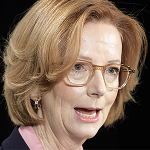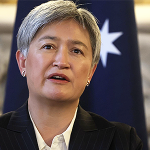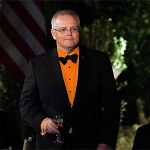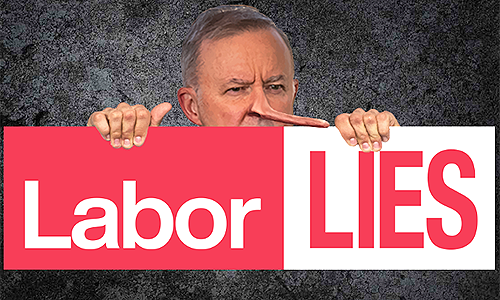While the political landscape of Australia has seen numerous battles over the years, between the city and the bush, played out by the Liberal and National parties, the literary scene of the 1890s was also marked by a significant rivalry between two of its most iconic figures: Banjo Paterson and Henry Lawson. Though not physical battles, their clash of ideologies and artistic expression played out in the pages of Australian publications, shaping the nation’s literary identity. These were the first shots in an enduring rivalry.
Competing Visions of Australia
Paterson and Lawson offered contrasting perspectives on Australian life, particularly regarding the bush experience. Paterson, known for his romantic and idealised portrayal of rural Australia, often depicted adventurous stockmen and the allure of the outback in poems such as, The Man from Snowy River and Clancy of the Overflow.
Lawson, on the other hand, presented a more realistic and often harsh view of bush and city life, focusing on the struggles and hardships faced by ordinary people. His stories and poems, such as The Drover’s Wife and Faces in the Street, reflected themes of poverty, isolation, and social injustice.
The Bulletin Debate
Their literary rivalry was notably played out in the pages of The Bulletin, a prominent Australian magazine. The two writers engaged in a famous ‘bush debate’ through their poems, where they challenged each other’s quintessential paradigm of daily life.
While Lawson focused on the urban working class facing hardship and injustice, Banjo saw colour, perseverance, overcoming, and resilience.
By the time Menzies was cobbling together the Liberal Party, a broader approach emerged, his ‘forgotten people’ were – small business owners, farmers, shopkeepers, and skilled tradespeople – and they felt were being overlooked by both big capital and organised labor.
Lawson’s forgotten people were now Big Labor, although still struggling at the bottom rungs of society, facing poverty and precarious work in the cities, were better organised and politically very powerful.
Both legacies of Paterson and Lawson highlight a segment of the population with different histories and differing perspectives on their lives. The hardcore Laborites became militant and gave Labor political power throughout the Commonwealth – if not at the federal level, certainly in the states. The Squattocracy evolved into a bastardised form of the landed gentry represented by the Country Party: both the Liberal and Country parties had the Labor Party as the common foe.
Legacy and Impact
Despite their differences, both Paterson and Lawson made invaluable contributions to Australian literature. Their works helped shape a national identity and continue to be celebrated as cornerstones of Australian literary heritage.
Likewise, Australia’s federal political landscape has long been defined by the same dynamic, and the often fraught, relationship between the Liberal Party and its conservative counterpart, the National Party (formerly the Country Party). While typically operating as a unified ‘coalition’, the history of these two parties is punctuated by instances of direct contest in federal and state seats, reflecting shifting demographics, policy divergences, and internal power struggles.
The core rationale for this enduring alliance has been mutual electoral benefit: the Liberals, primarily focused on urban and suburban areas, needed the Nationals’ strength in regional and rural electorates to form government.
Yet, contests between Liberal and National candidates are not new, particularly when underlying tensions reach a breaking point. These contests are often indicative of their perspectives of their worlds which like any relationship can diverge, like the great poets, despite sharing very common goals:
Demographic shifts in regional and urban areas fuel ambitions in traditionally held seats. Policy differences, particularly on agricultural, regional, and environmental issues like Net Zero emissions and nuclear power, create tension. Leadership changes and electoral performance, such as the Liberals’ recent urban seat losses while the Nationals held ground, impact coalition dynamics and can lead to parties contesting previously safe seats. Enter a formal coalition agreement.
The Future of a Fractured Alliance
The long-standing Liberal-National Coalition has been a cornerstone of Australian federal politics, delivering periods of stable government. However, the underlying tensions and distinct identities of the two parties have always meant that their alliance was one of strategic necessity rather than complete ideological fusion.
The recent breakdown of the formal agreement highlights the evolving challenges facing both parties. As Australia’s demographics shift and policy priorities around issues like climate change become more pronounced, the traditional lines between Liberal and National heartlands may blur further. The future of federal seat contests between these two historical allies promises to be a fascinating and potentially disruptive element of Australia’s political landscape, with significant implications for the balance of power in Canberra.
Few if any of the prevailing, ‘ruling class’ on the right see any benefit from this. Despite the espousal classical liberal ideology, like JS Mill, where the clash of ideas is fundamental to a well-functioning society, the gatekeepers are hard at work preserving something that has reached a corroded retirement.
The contrarians amongst us are despised and sought out as scapegoats. We are political derelicts who also have dared to suggest a change in social alignments. Courage – spiritual and intellectual – is what gives us, the thinkers, our scornful independence: Paterson and Lawson had this in spades. But where are the courageous scribes today. Spite has replaced courage, and the death of independence has created a void in public policy, reinforcing the framework that upholds the vested interest in the neo-market economies – opinion has replaced thought and argument.
It is breathtaking to watch the doctrinaire codes of conduct set forth on TV, in publications, articulated by mouldy has-beens of various types in language that seeks to defend the poor benighted arrangements and its policy offspring, from the consequences of their own actions.
The great irony is that Australia in the 19th Century was built on the pioneering spirit, Dasein and great Irish intransigence, a culture we’re not only proud of but celebrated by our past great literary writers. Now we are silent, ashamed, and unwilling to stake our reputations on calling it out for what it is and birthing something new.
The battle still exists between the eradication of uncertainty and the pursuit of excellence. Both are mutually exclusive as you can’t win unless you are prepared to lose – the forces of technology and global capital are bent on eliminating that which we cannot know but who is there to demystify this spectrum as it unfolds.
Bureaucrats and politicians have become the gatekeepers for economic rent seekers couched in the language of Noblesse Oblige, determined more than ever to uphold the interests of the global economic forces sweeping across Australia by managing choice and eliminating responsibility.
The Liberal Party is beyond redemption, the Country Party must move on. We need a cameo from the Man from the Snowy River.









